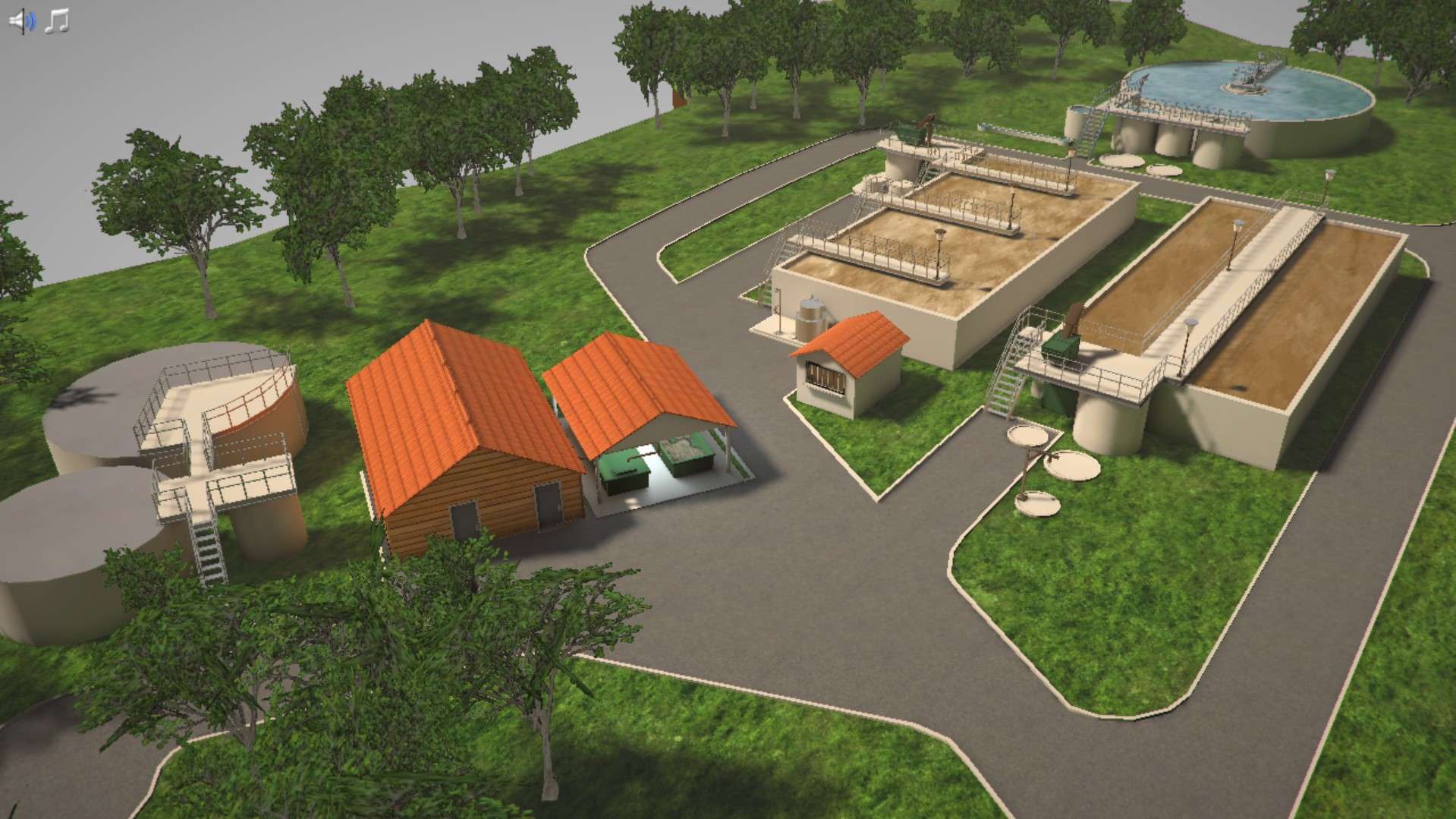Heading 1
Heading 2
Heading 3
Heading 4
Heading 5
Heading 6
Lorem ipsum dolor sit amet, consectetur adipiscing elit, sed do eiusmod tempor incididunt ut labore et dolore magna aliqua. Ut enim ad minim veniam, quis nostrud exercitation ullamco laboris nisi ut aliquip ex ea commodo consequat. Duis aute irure dolor in reprehenderit in voluptate velit esse cillum dolore eu fugiat nulla pariatur.
Block quote
Ordered list
- Item 1
- Item 2
- Item 3
Unordered list
- Item A
- Item B
- Item C
Bold text
Emphasis
Superscript
Subscript
About This Simulation
Study the treatment of urban wastewater. Will you be able to rescue a fish population suffering from pollution?
Learning Objectives
- Understand the different steps of the wastewater treatment process
- Understand how microorganisms degrade organic compounds during denitrification and nitrification
- Understand the influence of internal recirculation, sludge recirculation and aeration on the wastewater treatment process
- Understand how micropollutants can influence aquatic organisms
- Prepare samples for GC-MS
- Understand the basic concept behind GC-MS
About This Simulation
Lab Techniques
- Wastewater treatment
- Gas chromatography
- Mass spectrometry
Related Standards
Learn More About This Simulation
Clean water in the pipes! In this simulation, you will learn the basics of how a wastewater treatment process works. You will work with the different specific steps of the treatment, such as denitrification, nitrification and aeration, and prepare samples for GC-MS analysis to look for a targeted micropollutant.
Is the water safe to release?
It will be your mission to ensure that the micropollutant bisphenol A is effectively removed in the wastewater treatment process. Bisphenol A is commonly used in plastics and can be detrimental to life in water environments, even in very low concentrations. You will have to thoroughly understand how each of the treatment steps work, and carefully analyze whether the micropollutant is sufficiently removed.
Work on our lab-scale wastewater treatment plant
After visiting a full-scale sewage plant, you will head to our virtual lab to work on a lab-scale treatment plant that contains all the essential steps in the treatment process. You will have to ensure they all function correctly!
You will then need to employ gas chromatography coupled with mass spectrometry (GC-MS) to analyse samples of the water before and after treatment. In this simulation, it will be your task to correctly prepare the samples while your amazing virtual lab assistant will take care of the GC-MS method.
Protect the aquatic environment
Some of the water that we use in our daily lives will inevitably become polluted. Many of the pollutants that enter our sewers along with our used water can cause habitat degradation and harm aquatic life in both freshwater and marine environments.
Will you be able to improve the water quality of the wastewater to protect the environment?
For Science Programs Providing a Learning Advantage
Boost STEM Pass Rates
Boost Learning with Fun
75% of students show high engagement and improved grades with Labster
Discover Simulations That Match Your Syllabus
Easily bolster your learning objectives with relevant, interactive content
Place Students in the Shoes of Real Scientists
Practice a lab procedure or visualize theory through narrative-driven scenarios


FAQs
Find answers to frequently asked questions.
Heading 1
Heading 2
Heading 3
Heading 4
Heading 5
Heading 6
Lorem ipsum dolor sit amet, consectetur adipiscing elit, sed do eiusmod tempor incididunt ut labore et dolore magna aliqua. Ut enim ad minim veniam, quis nostrud exercitation ullamco laboris nisi ut aliquip ex ea commodo consequat. Duis aute irure dolor in reprehenderit in voluptate velit esse cillum dolore eu fugiat nulla pariatur.
Block quote
Ordered list
- Item 1
- Item 2
- Item 3
Unordered list
- Item A
- Item B
- Item C
Bold text
Emphasis
Superscript
Subscript
A Labster virtual lab is an interactive, multimedia assignment that students access right from their computers. Many Labster virtual labs prepare students for success in college by introducing foundational knowledge using multimedia visualizations that make it easier to understand complex concepts. Other Labster virtual labs prepare learners for careers in STEM labs by giving them realistic practice on lab techniques and procedures.
Labster’s virtual lab simulations are created by scientists and designed to maximize engagement and interactivity. Unlike watching a video or reading a textbook, Labster virtual labs are interactive. To make progress, students must think critically and solve a real-world problem. We believe that learning by doing makes STEM stick.
Yes, Labster is compatible with all major LMS (Learning Management Systems) including Blackboard, Canvas, D2L, Moodle, and many others. Students can access Labster like any other assignment. If your institution does not choose an LMS integration, students will log into Labster’s Course Manager once they have an account created. Your institution will decide which is the best access method.
Labster is available for purchase by instructors, faculty, and administrators at education institutions. Purchasing our starter package, Labster Explorer, can be done using a credit card if you are located in the USA, Canada, or Mexico. If you are outside of North America or are choosing a higher plan, please speak with a Labster sales representative. Compare plans.
Labster supports a wide range of STEM courses at the high school, college, and university level across fields in biology, chemistry, physics, and health sciences. You can identify topics for your courses by searching our Content Catalog.


















